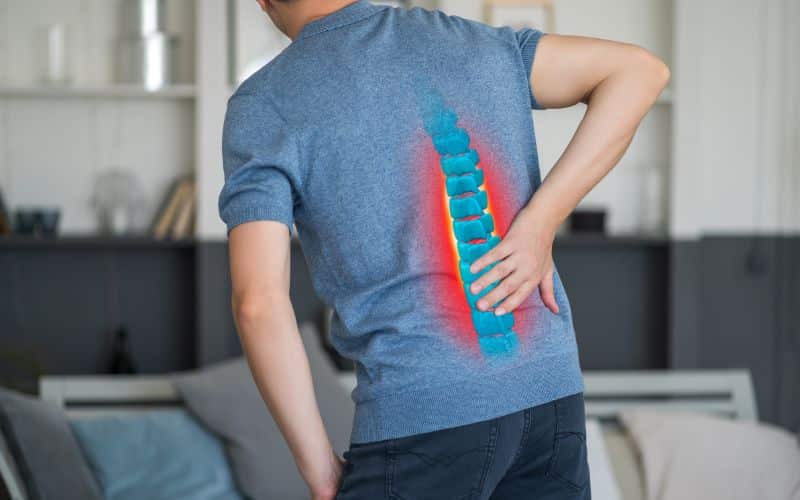
The lumbar spine is a key region of the human backbone, crucial for structural support, movement, and protection of critical parts of the nervous system. Located in the lower back between the thoracic spine and the sacral region, the lumbar spine plays a vital role in everyday activities such as walking, lifting, and twisting. We’ll look at the anatomy and function of the lumbar spine, providing insights into its importance to overall health and mobility.
Experiencing lower back pain? Contact a board-certified spine surgeon in San Clemente, CA like Dr Hamid R. Mir to Schedule a Consult
What is the Lumbar Spine?
The lumbar spine refers to the lower part of the spine that is typically made up of five vertebrae, although some individuals may have four or six lumbar vertebrae naturally. These vertebrae are denoted as L1 through L5, starting just below the ribcage and extending to the sacral area. The lumbar region is characterized by its larger and thicker vertebrae when compared to the cervical (neck) and thoracic (mid-back) regions, reflecting its weight-bearing role.
Parts of the Lumbar Spine
The lumbar spine comprises several key components:
- Vertebrae: The five lumbar vertebrae are the largest of the spinal column. They are designed to bear significant amounts of body weight and support a range of motions.
- Intervertebral Discs: Each vertebra in the lumbar spine is separated by an intervertebral disc, which acts as a shock absorber and provides flexibility to the spine. These discs are composed of a tough, fibrous outer layer called the annulus fibrosus and a soft, gel-like center called the nucleus pulposus.
- Spinal Cord and Nerves: The spinal cord ends at the upper part of the lumbar spine, giving way to a bundle of nerve roots known as the cauda equina. These nerves branch out from the spinal canal through openings in the vertebrae called foramina, transmitting signals between the brain and the lower parts of the body.
- Ligaments and Muscles: Various ligaments attach to the lumbar vertebrae, helping to stabilize the spine. The muscles of the lower back help support the spine and facilitate movement.
Notable Vertebrae
While each vertebra in the lumbar spine has a critical role, the L5 vertebra is notably significant due to its position and susceptibility to stress. L5 is the lowest vertebra in the lumbar spine and bears a great deal of the upper body’s weight. It articulates with the sacrum and is often the site of mechanical stress and disorders, such as degenerative disc disease or spondylolisthesis (a condition where one vertebra slips over the one below it).
Function of the Lumbar Spine
The primary functions of the lumbar spine include:
- Support and Load Bearing: The lumbar spine carries the majority of the body’s weight, especially when upright, which includes standing, walking, or lifting objects. Its robust structure allows for the distribution of body weight and provides stability.
- Movement: The lumbar spine allows for flexibility and a range of movements, including flexion (bending forward), extension (bending backward), lateral flexion (bending sideways), and rotation. These movements are essential for daily activities and athletic endeavors.
- Protection: The spinal canal of the lumbar region encases and protects the cauda equina and nerve roots that control lower limb movements and bowel and bladder functions.
Health and Lumbar Spine Issues
Due to its critical function and the high load it bears, the lumbar spine is often prone to conditions such as herniated discs, spinal stenosis, and chronic low back pain. Preventative measures such as maintaining a healthy weight, regular exercise, and proper posture can significantly reduce the risk of lumbar spine issues.
The lumbar spine is a pivotal part of the human anatomy that supports structural integrity, enables mobility, and protects neurological structures critical for lower body functioning. Understanding the anatomy and function of the lumbar spine can help individuals appreciate the importance of maintaining spine health through lifestyle choices and prompt attention to any back-related symptoms. By fostering a deeper understanding of this key anatomical feature, individuals can better manage their overall health and mobility and should you ever experience lower back pain remember to consult with your local spine surgeon in San Clemente, CA.



